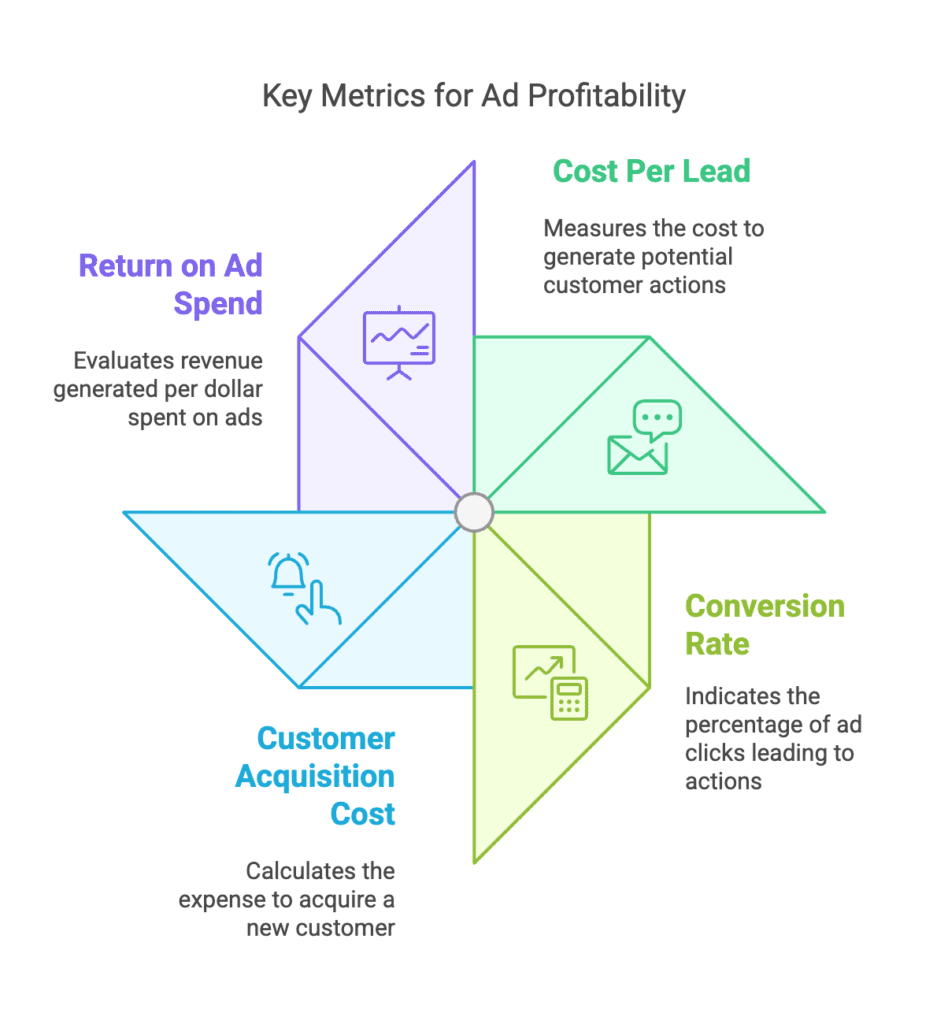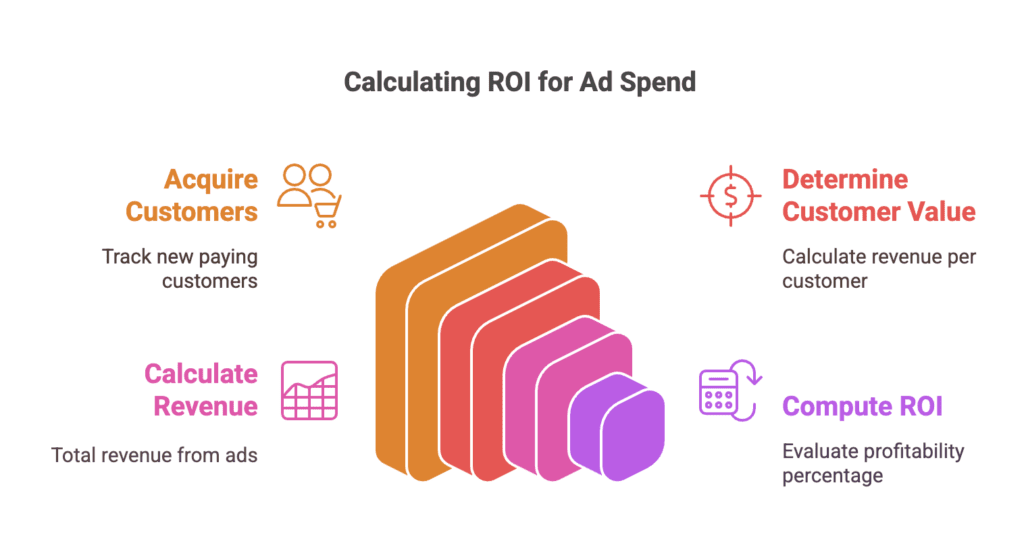Are your digital ads bringing in real customers—or just draining your budget?
You started running Google Ads, Facebook Ads, or Instagram Ads with the expectation that they’d bring in a steady flow of customers. But now, you’re not sure if they’re actually making you money.
-
-
You see clicks, impressions, and ad spend going up—but is any of that turning into profit?
-
-
-
You’re getting some leads, but are they quality customers or just price shoppers?
-
-
-
You don’t have clear answers, and you don’t have time to dig through endless ad reports.
-
If this sounds familiar, you’re not alone.
The biggest mistake local businesses make with digital ads is guessing whether they’re working instead of tracking the right numbers.
In this article, we’ll break down exactly how to measure ad success so you know—without guessing—if your digital ads are profitable.
1. Track the Right Metrics (Not Just Clicks & Impressions)
Most businesses focus on the wrong numbers.
Many businesses measure vanity metrics like:
-
- Clicks – Someone clicked your ad. Great! But did they take action?
-
- Impressions – Your ad was seen thousands of times. But did it generate revenue?
-
- Engagement – Likes and comments feel good, but they don’t pay the bills.
These numbers look good in reports but don’t tell you if your ads are actually bringing in paying customers.
What You Should Track Instead:
-
- Cost Per Lead (CPL) – How much does it cost to get a potential customer to call, fill out a form, or book an appointment?
-
- Conversion Rate – What percentage of people who click on your ad actually take action?
-
- Customer Acquisition Cost (CAC) – How much do you spend in ads to get one new paying customer?
-
- Return on Ad Spend (ROAS) – For every dollar spent on ads, how much revenue do you make?

Example: A law firm was excited about their 10,000 ad impressions, but when they tracked actual conversions, they realized their cost per client was too high. By refining their targeting and ad messaging, they cut wasted spend by 30% and increased signed clients.
Takeaway:
If you’re only looking at clicks and impressions, you have no idea if your ads are actually working.
2. Calculate Your Return on Investment (ROI) in Simple Terms
You don’t need to be a financial expert to measure ROI.
Many business owners avoid tracking ROI because they think it’s complicated. The truth? It’s easier than you think.
How to Calculate ROI for Your Ads:
Step 1: Track how much you spend on ads (e.g., $2,000 per month).
Step 2: Track how many new paying customers your ads bring in (e.g., 20 customers).
Step 3: Determine your average customer value (e.g., each new customer spends $500).
Step 4: Use this formula:
(Revenue from ads – Ad spend) ÷ Ad spend = ROI %

Example: A home renovation company spent $3,000 on ads in a month and brought in 5 new customers, each worth $6,000 in revenue. Their total revenue from ads was $30,000, meaning their ROI was 900%.
Takeaway:
If you’re not tracking ROI, you’re guessing whether your ads are making money.
3. Follow the Lead Journey (Do Your Ads Bring in the Right Customers?)
Not all leads are created equal.
Your ads might be bringing in lots of leads, but are they the right leads?
Some businesses see a flood of inquiries from ads, only to find that:
- Leads don’t respond to follow-ups.
- People are just price shopping and never book.
- They’re outside your service area or not qualified.
How to Tell If Your Leads Are Actually Valuable:
- Are they converting into paying customers?
- Are they the type of customers you actually want?
- Are they profitable, or are they just bargain hunters?
Example: A pest control company was getting tons of form submissions but realized that most leads were outside their service area. By adjusting their targeting and adding geo-fencing, they cut bad leads by 50% and increased revenue.
Takeaway:
More leads aren’t always better. You need the right leads who actually convert.
4. Check Your Profit Margins (Are Your Ads Actually Worth It?)
Just because ads bring in customers doesn’t mean they’re profitable.
Some businesses run ads that bring in customers, but at too high of a cost.
Questions to Ask:
- Are you making a strong profit after ad costs?
- Is your Customer Acquisition Cost (CAC) too high?
- Are you spending more than you should be on certain platforms?
How to Fix It:
- Lower your cost per lead by improving your targeting and ad quality.
- Increase customer lifetime value by encouraging repeat business and referrals.
- Optimize your ad budget by cutting spend on underperforming campaigns.
Example: A law firm was paying $150 per lead on Google Ads but only converting 10% of leads into paying clients. By improving their follow-up process and ad targeting, they dropped their cost per lead to $75 and doubled conversions.
Takeaway:
Revenue doesn’t matter if your profit margins are too low.
Final Thoughts: How to Know If Your Ads Are Actually Making You Money
If you’re unsure whether your digital ads are profitable, here’s what you need to do:
- Track real metrics like conversion rate, cost per lead, and ROI.
- Calculate your return on investment—if you’re guessing, you’re wasting money.
- Follow the lead journey to make sure your ads are bringing in the right customers.
- Check your profit margins—if your customer acquisition cost is too high, something’s off.



